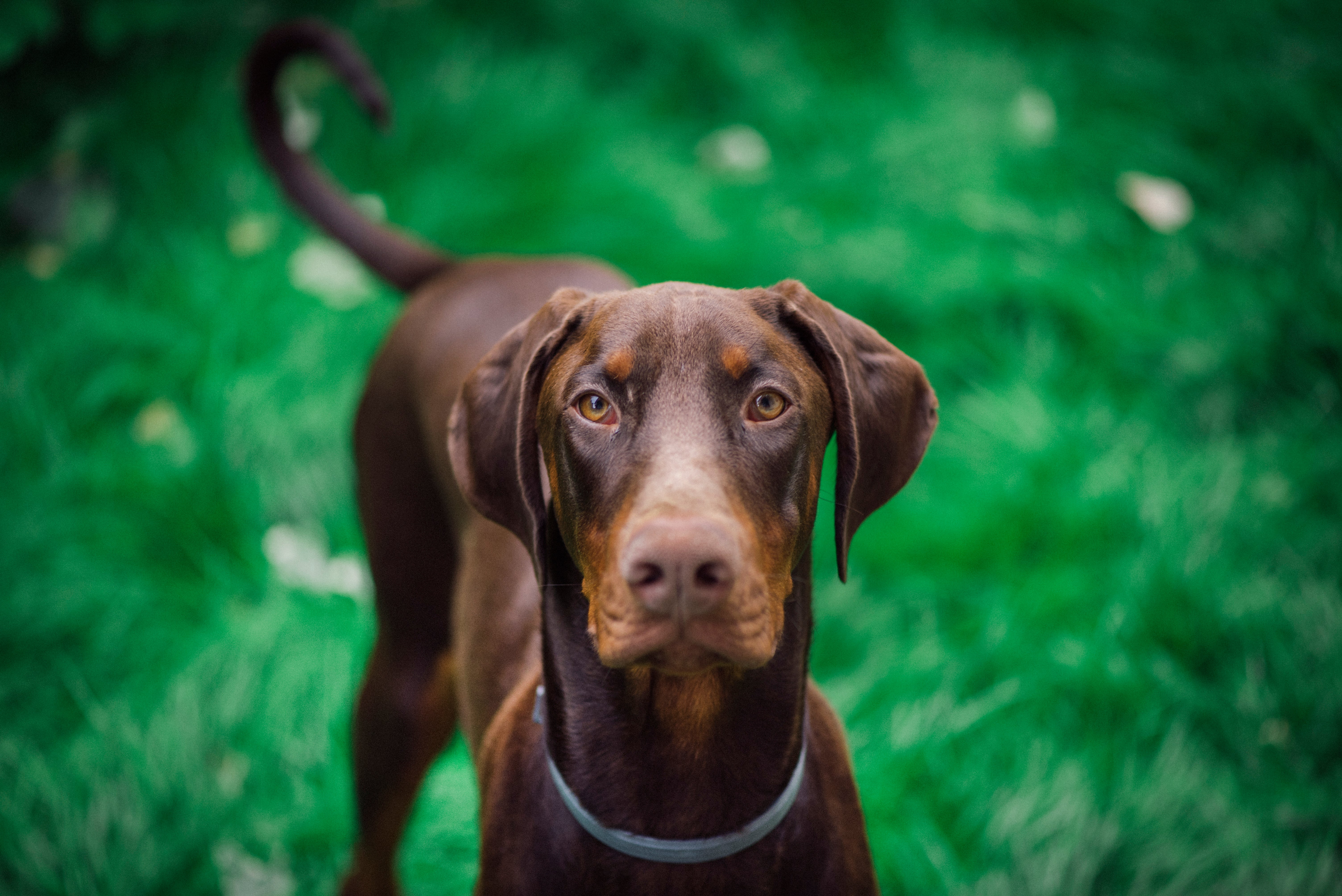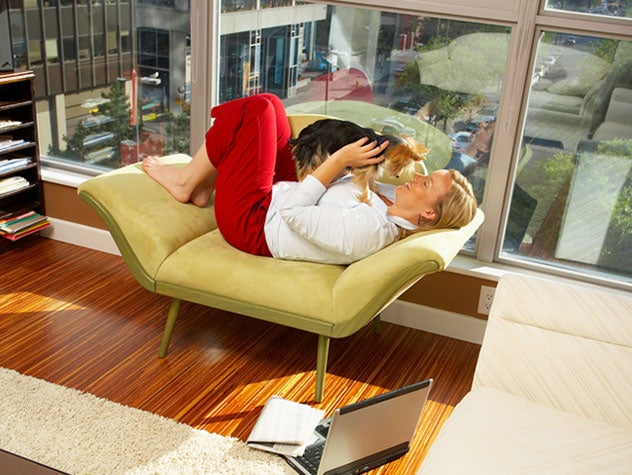Doberman Pinscher
Muscular, powerful, and alert, the Doberman Pinscher is known for its elegance, strength, and endurance. They hold their heads proudly, perhaps in defiance of the stereotype that they are aggressive dogs. The Doberman coat is short, smooth, and hard, showing off the exceptionally clean-cut lines of this athletic breed.
Breed characteristics carousel
Learn More
Need to Know
- Suitable for experienced owners
- Extra training required
- Generally healthy breed
- Enjoys daily walks
- Large dog
- Minimal drool
- Requires regular grooming
- Chatty and vocal dog
- Barks, alerts, and may be physically protective/suspicious of visitors
- Could have issues with unknown dogs but gets along with known dogs
- May need additional training to live with other pets and children
- Needs a large yard
- Can be left alone occasionally with training
- AKC Registered Breed

Personality
If you’re looking for a devoted family dog that will be ever-vigilant in protecting your house, the Doberman Pinscher is a good choice. They’re intelligent guardians, always on alert. Loyal, adventurous, and energetic, they thrive off high exercise needs and mental challenges. They have a gift for obedience and agility and, despite the stereotypes of being aggressive, are sensitive and want to please their owners. Some can be domineering, though, and many are reserved with strangers.
Herr Louis Doberman was a door-to-door tax collector who needed a dog to accompany him on his rounds. In the late 1800s, he set about to create an alert streamlined guard dog, most likely by crossing the old German Shepherd Dog and German Pinscher, with later crosses to the Black and Tan Manchester Terrier, Greyhound, and Weimaraner. He soon obtained the prototype of the breed that now bears his name.
The original Dobermans were still somewhat heavy-boned and round-headed; subsequent breeders created a more elegant-looking dog. The breed evolved quickly; by 1899 the first breed club was formed. The first Doberman dog arrived in America in 1908. They soon found favor throughout Europe and America as police dogs and later as working war dogs. Their prowess in these areas soon brought more admirers, and the Doberman quickly became a valued family pet. Their chiseled silhouette and fearless alert demeanor have made the Doberman a top contender as a show dog.
As their fame grew, many families grew to appreciate the breed as a family pet, and the Doberman eventually rose to be the second most popular breed in America in 1977. Unfortunately, they were often cast as a vicious breed, and their reputation unfairly suffered. In the mid-20th century, albinistic white Dobermans emerged. To decrease the chance of producing these dogs, the Doberman Pinscher Club of America convinced the AKC to tag the registration numbers of dogs with the likelihood of carrying the albino gene with the letter Z (a DNA test is now available).
You’ll need patience and will need to be dedicated to kind, reward-based training which will eat up a good portion of your free time in order to properly train a Doberman. This slow-maturing breed does turn into a wonderful gentle giant companion with hard work, time, and effort. These regal and brave pups are eager to please and eager to work, and you might even have to teach yours to learn how to relax. Ideal owners are fit, active, and have plenty of spare time to take their Dobermans on long walks. They are best suited to child-free families or those with older children who can participate in training such a large dog.
Doberman Pinschers are an active breed that needs daily mental and physical exercise lest they become frustrated or destructive. Their exercise requirements can be met with a long jog, a walk on a leash, or a strenuous run in a safe area.
Doberman owners win the grooming lottery—there is very little grooming involved. A good rub down with a rubber grooming mitt occasionally will remove any dead or loose hair.
Bred to work and sharply intelligent, a Doberman will enjoy training and excel at it. They need to be trained at a high level to keep them comfortable and safe and to manage their natural guard dog instincts when inside the house. Early socialization is important as they are naturally suspicious of strangers. They can be destructive and aggressive if not trained properly.
A well-trained Doberman is loyal, affectionate, and makes a great family dog but this takes an enormous amount of commitment on the part of the owners. They do best with no children or older children in the home who can participate in training them.
The cost of a Doberman Pinscher from a breeder is significantly more than the cost of adopting one from a local shelter or rescue. The adoption fee usually covers additional items such as spaying or neutering, vaccines, and microchipping.

Learn more about feeding and caring for your Doberman Pinscher on Purina.
Did You Know?
- During the First World War, the breed almost died out as people in Europe couldn’t afford to keep such large dogs. Dobermans found work in the military and police forces, which guaranteed their future.

